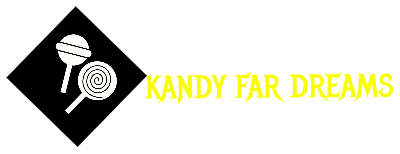Uncategorized
What does khat look like AND EFFECT EFFECT
What does khat look like?
When fresh, khat leaves are glossy and crimson-brown in color, resembling withered basil. Khat leaves typically begin to deteriorate 48 hours after being harvested from the shrub on which they grow. Deteriorating khat leaves are leathery and turn yellow-green. effect of khat
How is khat used?
Fresh khat typically is chewed and then retained in the cheek and chewed intermittently until the juices are extracted. Dried khat can be brewed into tea or made into a chewable paste. Less common methods of administering khat are smoking or sprinkling on food. Immediate effects of khat use include increased heart and breathing rates, elevated body temperature and blood pressure, and increased alertness, excitement, energy effect of khat , and talkativeness. The effects of khat usually last between 90 minutes and 3 hours. After-effects of khat use include lack of concentration, numbness, and insomnia. effect of khat
Who uses khat
The use of khat is accepted within Somali, Ethiopian, and Yemeni cultures; in the United States, khat use is most prevalent among immigrants from those countries. Abuse levels are highest in cities with sizable immigrant populations from Somalia, Ethiopia, and Yemen, such as Boston, Columbus, Dallas, Detroit, Kansas City, Los Angeles, Minneapolis, Nashville, New York City, and Washington, D.C. effect of khat
Street Terms for Khat
| Abyssinian tea African salad Bushman’s tea Chat Gat Graba KatMiraa Oat Qat Somali tea Tohai Tschat |
What are the risks?
Khat abuse causes psychological dependence, and chronic abuse can lead to behavioral changes and mental health impairment. Clinical symptoms include manic behavior with grandiose delusions, violence, suicidal depression, and schizophreniform psychosis characterized by paranoid delusions. Chronic abuse can also produce physical exhaustion, anorexia, periodontal disease effect of khat , and gastrointestinal illness.
Is khat illegal?
There is no licit use for khat in the United States. Khat contains two central nervous system stimulants: cathinone–a Schedule I drug1 under the Federal Controlled Substances Act–and cathine–a Schedule IV drug.2 Cathinone is the principal active stimulant; its levels are highest in fresh khat. Once the plant is harvested, cathinone levels begin to decline; cooling the cut plant material reduces the rate of decline. In dried or dehydrated khat, also known as Graba, cathinone may be detected for many months or even years. Cathine, which is about 10 times less potent than cathinone, remains stable in khat after the plant has been harvested. Khat samples in which any level of cathinone is found by chemical analysis are treated as Schedule I plant material. Khat samples in which only cathine is detectable by chemical analysis are treated as Schedule IV plant material effect of khat .
Can you get addicted?
Khat can make a user psychologically dependent (with cravings and a desire to keep using in spite of potential harm). When some users stop using they can feel lethargic or mildly depressed and may have a withdrawal period with fine tremors and nightmares effect of khat .
SPECIAL PRECAUTIONS & WARNINGS
Pregnancy and breast-feeding: It is POSSIBLY UNSAFE to take khat by mouth if you are pregnant. Khat may lower birth weight. It is also POSSIBLY UNSAFE to take khat by mouth if you are breast-feeding. Some of the active chemicals it contains can pass into breast-milk.
Diabetes: Using khat seems to lower appetite, causing people to skip meals. When eating becomes less routine, people with diabetes may stop following their recommended diet. This could lead to higher blood sugar levels.
High blood pressure: Khat might increase blood pressure. This might be especially unsafe in people who already have high blood pressure. Avoid use effect of khat .
INTERACTIONS
AmpicillinInteraction Rating: Major Do not take this combination.
Khat might reduce how much ampicillin the body absorbs. This might decrease how well ampicillin works. Separate dose times by at least 2 hours. effect of khat
Medications for high blood pressure (Antihypertensive drugs)Interaction Rating: Moderate Be cautious with this combination.Talk with your health provider.
Khat might increase blood pressure. By increasing blood pressure, khat might decrease the effectiveness of medications for high blood pressure.
Some medications for high blood pressure include captopril (Capoten), enalapril (Vasotec), losartan (Cozaar), valsartan (Diovan), diltiazem (Cardizem), amlodipine (Norvasc), hydrochlorothiazide (HydroDiuril), furosemide (Lasix), and many others.
Stimulant drugsInteraction Rating: Moderate Be cautious with this combination.Talk with your health provider.
Stimulant drugs speed up the nervous system. By speeding up the nervous system, stimulant medications can make you feel jittery and speed up your heartbeat. Khat might also speed up the nervous system. Taking khat with stimulant drugs might cause serious problems including increased heart rate and high blood pressure. Avoid taking stimulant drugs along with khat.
End Notes
1. Schedule I drugs under the Controlled Substances Act (CSA) are classified as having a high potential for abuse, no currently accepted medical use in the United States, and a lack of accepted safety for use of the drug under medical supervision.
2. Schedule IV drugs under the CSA are classified as having a low potential for abuse relative to the drugs or other substances in Schedule III, a currently accepted medical use in the United States, and abuse of the drug may lead to limited physical dependence or psychological dependence relative to the drugs or other substances in Schedule III.
| Crack cocaineCrystal methamphetamineDrug paraphernaliaDXMFoxyFryGHB and analogsHeroinInhalantsJimsonweedKetamineLSDMarijuanaMDMAMethadoneMethamphetamineOxyContinPCPPowder cocainePrescription drugsPsilocybinRitalinRohypnolSalvia divinorumSteroidsTeens and drugsTriple CYaba |

